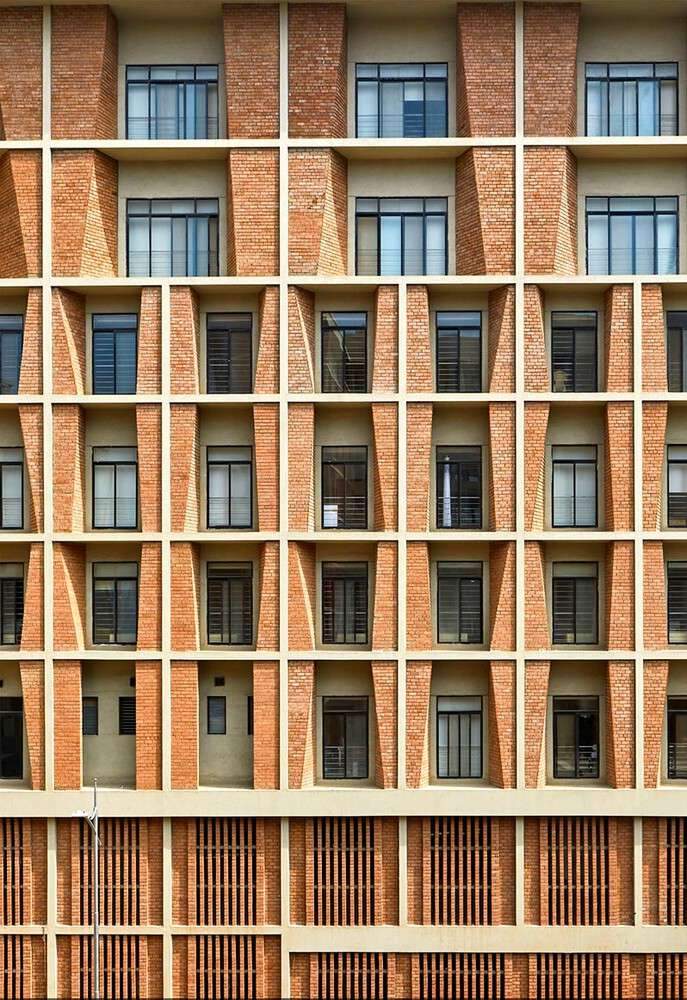Text description provided by the architects. Occupying the lower slopes of a hill within Symbiosis International University’s 260-acre estate in Lavale, Symbiosis University Hospital and Research Centre (SUHRC) may be a 41,800-square-metre, 216-bed, multi-specialty hospital that represents a replacement and progressive face for healthcare infrastructure in India. With its state-of-the-art healthcare facilities and a search centre to reinforce skill development, it’s firmly anchored today as a COVID-19 quarantine and treatment facility, contributing to Maharashtra’s fight against the pandemic.


SUHRC’s design draws from the ideas of biophilia (an innate human tendency to hunt connections with nature and other sorts of life) to market recovery and rejuvenation for patients and healthcare professionals. Two large courtyards landscaped with flowering shrubs and trees usher in ample daylight and views of the outside into the interiors, while creating buffer zones to scale back nonsocial infection . Critical areas like ICUs are endowed with soft and soothing hues to scale back anxiety; while the OPD has no air con but allows for fresh, natural air – thereby reducing the AC load and power consumption for these areas.

Functionally, the building comprises four sections; three of them belong to the hospital and therefore the last one being the Skill Centre. The hospital is planned across five levels; departments like the OPD, casualty, radiology, MHC etc. This helps keep the departments separate, and thus maintaining the sterility of every floor function-wise.


Carefully and strategically planned, the building attempts to form gestures that are grand, yet local and responsive attentively to details like the brick-art and therefore the exposed concrete. The project is an exemplar of passive design and sustainability.

Naturally-compressed, sundried earthen bricks (CSEB) were produced on site and are wont to create a double-skinned façade with boxed forms and deep shading projections to scale back heat gain. CSEB through its own porosity and its use in elements like cavity walls and jaalis enables the structure to deal with climate of the region by allowing the building to breathe. This reduces the interior heat gain allowing maximum thermal comfort, reducing energy consumption. The bricks were produced on site employing a block-making machine, thus providing additional employment opportunities to the locals also as ensuring minimal carbon emissions. this is often the primary time CSEB has been utilized in a project of such an outsized scale.

Project gallery





















Project location
Address:Lavale, Maharashtra 412115, India






